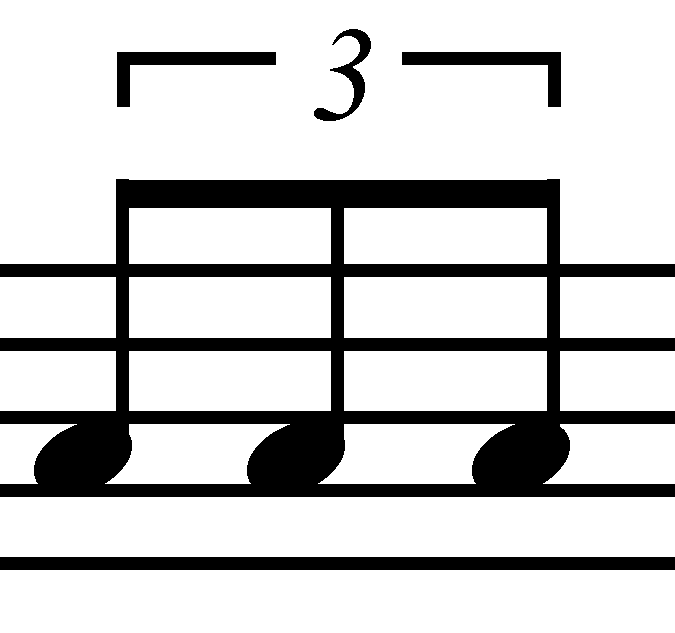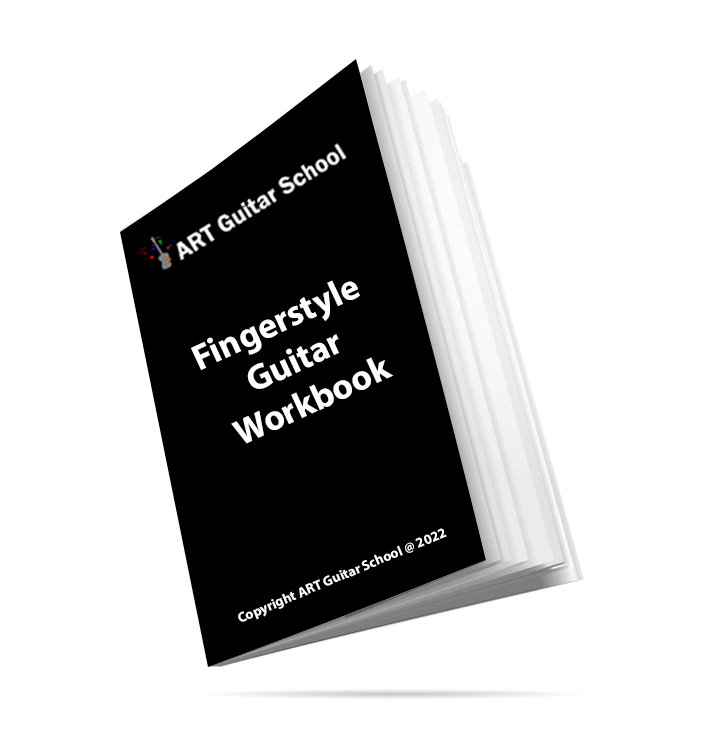One of the most common questions in regards to rhythm is how to play a triplet picking pattern. In order to do so you must first understand how a triplet works.
A triplet is split evenly into three parts within a quarter note. It’s like squeezing 3 eighth notes into one beat however, the duration of each is now slightly shorter due to the limited amount of time to fit each note within that beat.
Rhythm #1
Here is a quarter note pattern to start with. Pluck each note as one beat.
We added a half note at the end to fulfill the measure.

Rhythm #2
Now let’s try an eighth note pattern. Pluck two notes for each beat. They must fit evenly within the quarter note on the down and up beats.

Rhythm #3
Finally, this is the triplet pattern. I would recommend started by plucking only the first string with this rhythm. Count the rhythm as “one and ah, two and ah”.

Here is a video on popular finger picking patterns to start with:
If you were having trouble making the trip it’s even within the beat try using a metronome set a quarter notes 40 BPM and practice playing three notes within each beat.
FOLLOW US ON
Get our FREE Fingerstyle Workbook!
RELATED BLOG POSTS
Fingerstyle Guitar: 5 Common Mistakes and How to Avoid Them
Fingerstyle guitar is rewarding but can come with a few growing pains. Here are five common mistakes beginners make and how to fix them:
1. Inconsistent Thumb Control
The thumb controls the bass notes, but beginners often struggle with precision. Practice playing just the bass notes to improve control.
2. Improper Finger Placement
Weak or muted strings can result from poor finger placement. Keep your fingers naturally curled and avoid splaying them out.
3. Rushing Through Patterns
It’s tempting to speed up, but slow down your practice. Accuracy comes first, and speed will follow with time.
4. Too Much Tension
Tension limits flexibility and causes strain. Relax your hand, wrist, and fingers for better control and speed.
5. Not Using the Right Nails
Nails are key for a bright sound and control. If necessary, grow your nails slightly or use fingerpicks to enhance your playing.
Getting Started with Fingerstyle Guitar: A Beginner’s Guide
Welcome to the world of fingerstyle guitar! If you’re new to guitar, you’ve probably seen players creating beautiful music without a pick, using just their fingers. Wondering where to start? Here’s your beginner guide to fingerstyle guitar!
1. Hand Positioning
The first step to learning fingerstyle is understanding hand positioning. Hold your guitar with your thumb lightly resting on the low E string and your fingers hovering over the higher strings (D, G, B, and high E). Your thumb controls the bass notes, while your fingers handle the melody.
2. Basic Fingerpicking Patterns
The Travis Picking pattern is a popular fingerpicking style for beginners. Here’s a basic example:
Thumb (P) – 6th string (E)
Index (I) – 3rd string (G)
Thumb (P) – 4th string (D)
Middle (M) – 2nd string (B)
3. Your First Fingerstyle Song
Once you get the hang of basic picking patterns, try “Dust in the Wind” by Kansas. It’s perfect for beginners with a simple pattern and a beautiful melody. Start slow, focus on accuracy, and soon you’ll be playing full songs!
The Ultimate Beginner’s Guide to Fingerstyle Guitar
Welcome to the world of fingerstyle guitar! If you’re new to guitar, you’ve probably seen players making amazing music without a pick, using just their fingers to create beautiful sounds. But where do you start?
Hand Positioning: The first step to learning fingerstyle is understanding hand positioning. Hold your guitar so your thumb rests lightly on the low E string, and your fingers are hovering over the higher strings (D, G, B, and high E). Your thumb will generally control the bass notes (on the lower strings), while your fingers pick the melody (on the higher strings).
Basic Fingerpicking Patterns: The most common fingerpicking pattern is called the Travis Picking pattern, where the thumb alternates between bass notes (usually on the E, A, and D strings) while the index and middle fingers pick the higher strings. Here’s a basic example:
Thumb (P) – 6th string (E)
Index (I) – 3rd string (G)
Thumb (P) – 4th string (D)
Middle (M) – 2nd string (B)
First Fingerstyle Song: Once you get the hang of basic picking patterns, you can try your first simple fingerstyle song. A great one for beginners is “Dust in the Wind” by Kansas. It uses a simple pattern and a beautiful melody to help get your fingers accustomed to the flow of fingerstyle.
Start slow, focus on accuracy, and build your confidence with these techniques. Before you know it, you’ll be playing full songs with ease!




0 Comments